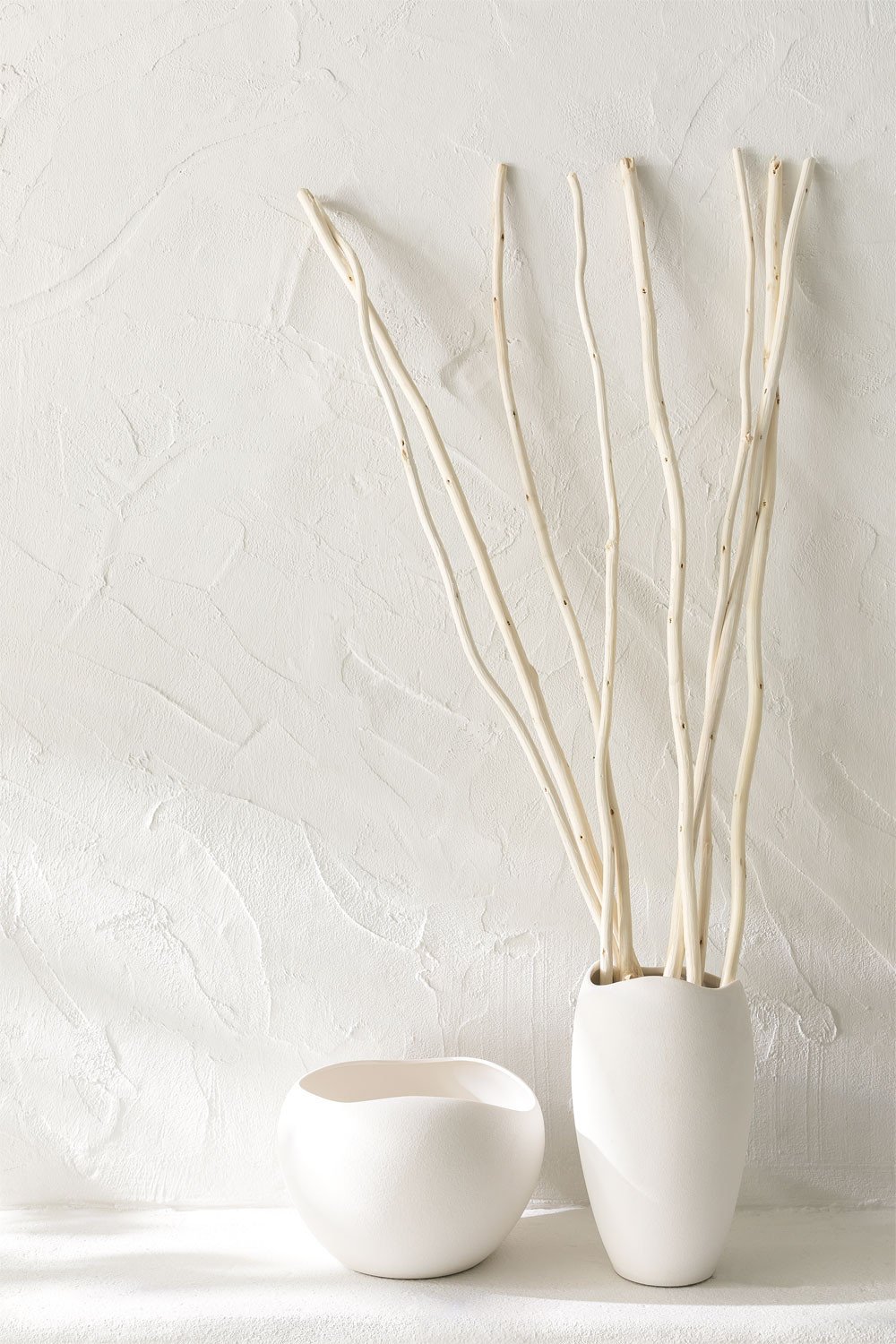Introduction
Decorative dried branches have become a popular trend in home decor, and for good reason! These natural elements are not just aesthetically pleasing but also versatile and easy to work with. As someone who loves to incorporate natural elements into my home, I’ve found that dried branches can transform a space, adding texture and interest. This article will explore everything you need to know about decorative dried branches, from types to creative uses, along with their pros and cons.
What Are Decorative Dried Branches?
Decorative dried branches are limbs or twigs that have been harvested, dried, and often treated for preservation, making them ideal for decorative purposes. They can be used in various settings, from rustic to modern designs, enhancing your decor with their organic shapes and earthy tones.
Types of Decorative Dried Branches
There are many types of decorative dried branches, each offering unique properties and aesthetics. Here’s a quick overview of some popular varieties:
| Type | Appearance | Common Uses |
|---|---|---|
| Willow Branches | Thin, flexible, and often curved | Wreaths, centerpieces, and wall decor |
| Birch Branches | White bark with a rustic appearance | Floral arrangements, pots, and natural accents |
| Dogwood Branches | Bold, colorful stems that add drama | Modern decor, arrangements, and centerpieces |
| Red Twig Dogwood | Vibrant red stems, great for winter | Holiday decor and seasonal displays |
| Pine Branches | Needle-like leaves, rich green color | Holiday decor and rustic arrangements |
Benefits of Using Decorative Dried Branches
Incorporating dried branches into your decor comes with numerous benefits. Here are some key points to consider:
- Natural Aesthetic: Dried branches bring a piece of nature indoors, creating a calming and warm atmosphere.
- Versatility: They can be styled in a variety of ways, fitting into any decor theme from bohemian to minimalist.
- Longevity: Unlike fresh flowers, dried branches last much longer, making them a great investment for your decor.
- Low Maintenance: Dried branches require little to no upkeep, unlike living plants that need regular water and sunlight.
- Customizable: You can easily paint or embellish them to match your seasonal decor or color schemes.
Creative Uses for Decorative Dried Branches
1. Centerpieces
Dried branches can serve as stunning centerpieces on dining tables, coffee tables, or mantels. Combine them with flowers or other natural elements for an eye-catching arrangement.
2. Wall Art
Group branches together to create a unique wall art display. Use different lengths and colors to add depth and interest.

3. Wreaths
Craft your own wreath using dried branches as a base. Add seasonal embellishments for a festive touch.
4. Vases and Pots
Place dried branches in decorative vases or pots to create a simple yet elegant statement piece.

5. Holiday Decor
Use dried branches to enhance your holiday decor. They can be integrated into Christmas arrangements or fall displays.
How to Care for Decorative Dried Branches
While dried branches are low maintenance, a little care can help preserve their beauty:
- Avoid Moisture: Keep them away from damp areas to prevent mold and deterioration.
- Dust Regularly: Use a soft cloth or duster to remove dust buildup.
- Store Properly: If you’re not displaying them, store your branches in a dry, cool area, away from direct sunlight.

Pros and Cons of Using Decorative Dried Branches
Pros
- Enhance the aesthetic appeal of any space.
- Versatile for various decor styles and occasions.
- Cost-effective, as they last much longer than fresh flowers.
- Eco-friendly option compared to synthetic decor.

Cons
- Can be fragile and may break if not handled properly.
- Some may find the look too rustic or unrefined.
- Limited color options compared to artificial alternatives.
Where to Buy Decorative Dried Branches
Dried branches can be found at various retailers, both online and in-store. Here’s a list of places to consider:
- Local florists
- Craft stores (like Michaels or Hobby Lobby)
- Home decor stores (such as HomeGoods or Pier 1)
- Online marketplaces (like Etsy or Amazon)
- Specialty botanical shops

Personal Experience with Decorative Dried Branches
When I first began decorating with dried branches, I was surprised by how much they elevated my home. I remember picking up some twisted willow branches from a local craft store and placing them in a simple ceramic vase. The effect was immediate—my living room looked more inviting and sophisticated!
Over time, I’ve experimented with different types and arrangements, and each change brings a new life to my decor. It’s amazing how a few branches can tell a story and evoke emotions, whether through a cozy arrangement in winter or vibrant colors in spring.
FAQs About Decorative Dried Branches
1. Can I paint dried branches?
Yes, you can paint dried branches! This is a great way to customize them to fit your decor. Just use acrylic paint and ensure you let them dry completely before using them in arrangements.

2. How do I arrange dried branches?
Start by choosing a sturdy base, like a vase or a pot. Trim the branches to varying heights for a natural look, and arrange them in a way that feels balanced yet organic.
3. Do dried branches attract pests?
Generally, dried branches do not attract pests. However, it’s essential to ensure they are completely dry and clean to avoid any potential issues.

4. How do I integrate dried branches into seasonal decor?
Embellish dried branches with seasonal decor, such as pumpkins for fall or ornaments for winter. You can also create themed arrangements that reflect the colors and styles of each season.
5. Are decorative dried branches safe for pets?
While most dried branches are safe, if you have pets that like to chew on things, it’s best to monitor them. Ensure that the branches are not from toxic plants.